Contents
- Agashi Maha Tirtha Digambar Jain Mandir
- Holy Spirit Church (Nandakhal Church)
- Jai Vilas Palace, Jawhar
- Jivadani Mandir
- Mahalakshmi Mandir, Dahanu
- Manijeh Pirojsha Sachinwalla Dar-e-Meher Agiary
- Shitala Devi Mandir, Kelwa
- Sopara
- St. James Church
- Kali and Mahadev Mandir
- Vasai Fort
- Zai-Bordi Parsi Anjuman Agyari
- Puratan Mandirs of Gunj Village, Wada Taluka
- Sources
PALGHAR
Cultural Sites
Last updated on 22 July 2025. Help us improve the information on this page by clicking on suggest edits or writing to us.
Agashi Maha Tirtha Digambar Jain Mandir
Agashi Maha Tirtha is a prominent Jain yatra site located in the Chalpeth area of Virar, in Palghar district. The Mandir is dedicated to Moolnayak Bhagwan Shri Munisuvrat Swami (20th Tirthankara in Jain tradition), whose pratima is believed to be swayambhu, having emerged from a nearby pond about 200 years ago.
![The Agashi Maha Tirtha in Virar is an intricately carved marble structure.[1]](/media/culture/images/maharashtra/palghar/cultural-sites/the-agashi-maha-tirtha-in-virar-is-an-_MDITIeH.png)
According to local tradition, the Munisuvrat Swami's pratima appeared in a pond at Chakreshwar, in the Sopara region. Villagers placed the Murti on a cart pulled by two bulls, and as the story goes, the cart began moving on its own, travelling nearly 9 km before coming to a stop at the present-day site in Chalpeth. The Murti remained at a cottage in Sopara for the next 17 years, until a proper Mandir could be built.
The construction of the Mandir is associated with Seth Motisha, a Jain trader whose ships had gone missing during a trading voyage. Upon learning of the journey of Samiji's Murti, he is believed to have prayed to it, vowing to build a Mandir if his ships returned. When they did, he fulfilled his vow by funding the structure that stands today.
![The murti inside the Agashi Maha Tirtha Mandir.[2]](/media/culture/images/maharashtra/palghar/cultural-sites/the-murti-inside-the-agashi-maha-tirth_4Fl4kgN.png)
Agashi, by its link to Sopara and the larger spiritual geography of western India, holds a place of deep reverence for many. The complex includes a dormitory for Jain students, accommodation for sadhus (monks), and is open to all visitors regardless of faith.
Holy Spirit Church (Nandakhal Church)
Holy Spirit Church, located between Nirmal and Agashi in Palghar district, lies about 13 km north of Vasai Fort. Built by the Portuguese in 1573, it is one of the oldest churches in the region, established during the time when Bassein (Portuguese name for Vasai) was part of their colonial territories in western India.
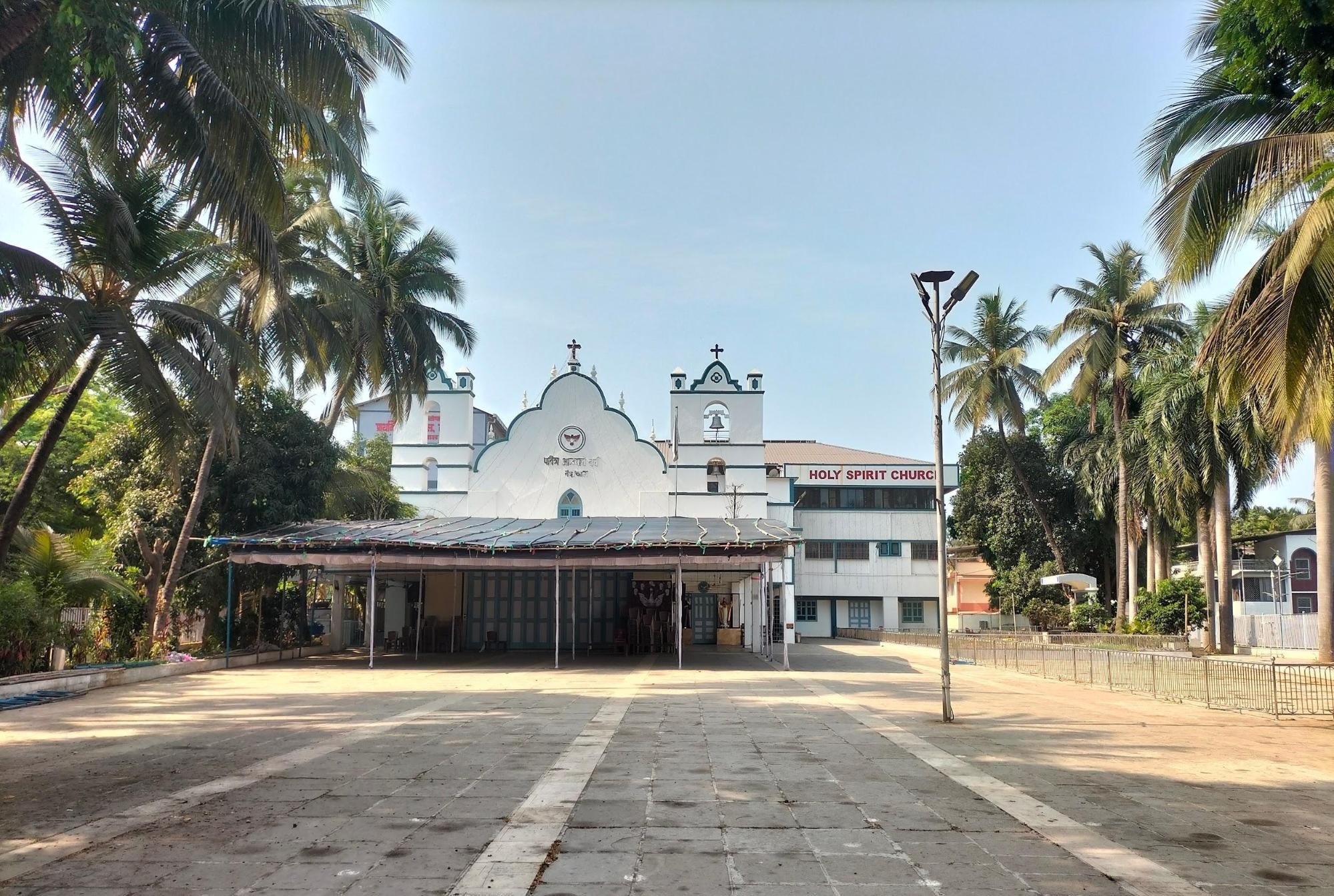
The church is associated with the early missionary efforts of the Franciscan order, a Catholic religious community that played a central role in spreading Christianity across the region. Originally built to serve residents of the nearby Holy Cross parish, it developed into an independent congregation over time. In 1739, during the Maratha campaign against Portuguese-controlled territories in western India, many churches in the Vasai (then Bassein) area were damaged or destroyed. According to local accounts, this church was spared when a swarm of bees disrupted the attacking force, driving them away.
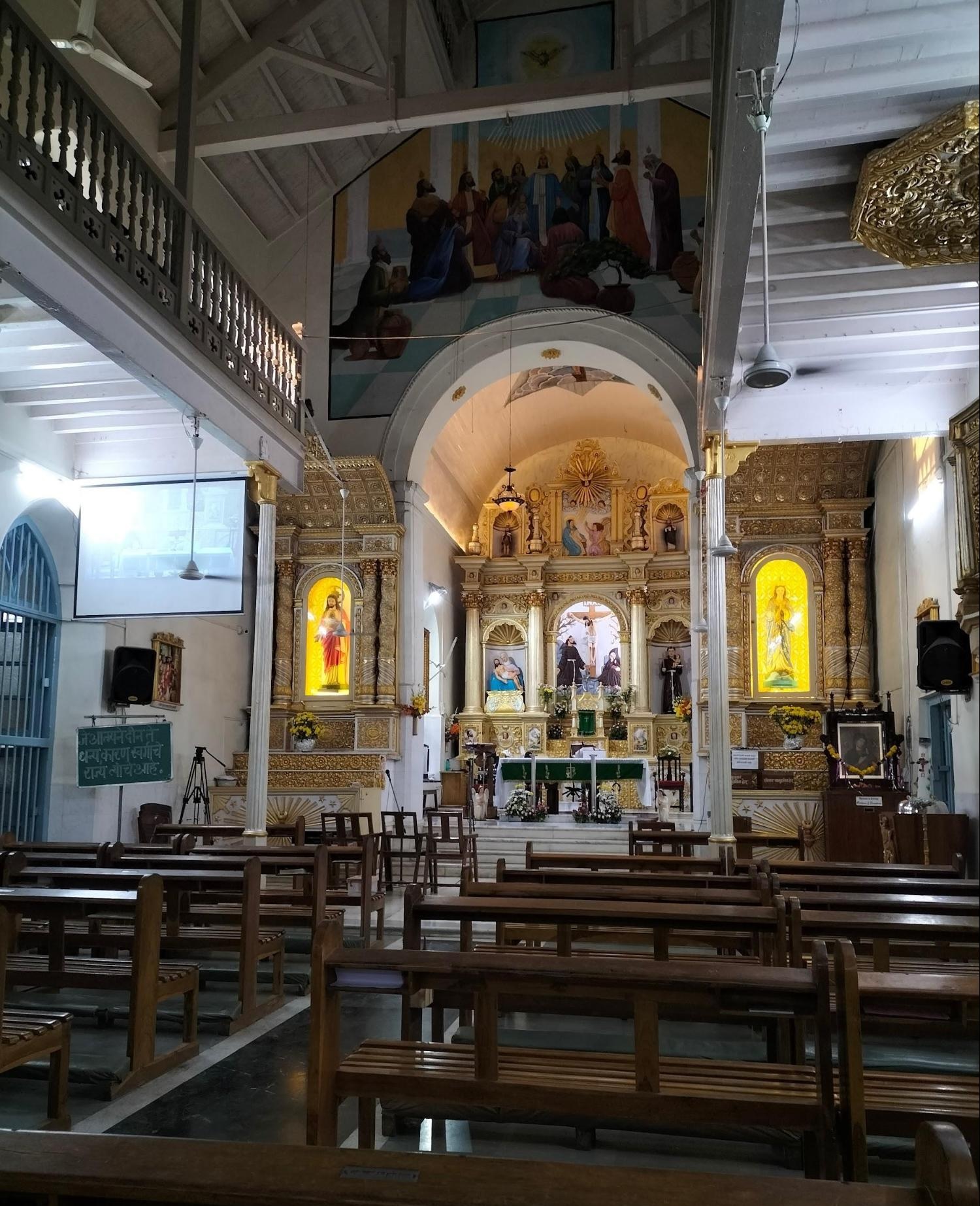
Architecturally, the church follows a style similar to older Goan churches, marked by a modest exterior and a richly ornamented interior. The main altar, dated to 1558, features scenes from the life of Jesus Christ and is flanked by statues of Mother Mary, known locally as Mata Mariya or Mauli (Marathi for ‘mother’ in some contexts). Mass is conducted in Marathi mostly. The parish is served by priests, nuns, and lay staff, and also operates a school on the church grounds. Today, Holy Spirit Church is considered the largest parish in the region by membership and remains an active centre of worship and community life.
Jai Vilas Palace, Jawhar
Jai Vilas Palace, also known as Raj Bari, is located in Jawhar, Palghar, and served as the royal residence of the Mukne family. Built by Raja Yashwant Rao Mukne, the palace is an impressive example of pink stone architecture, set atop a hill and surrounded by forests and cashew plantations. Its domes rise above the greenery, standing in contrast to the natural surroundings and reflecting the regal presence of the former rulers. Indeed, it is an emblem of Palghar district’s princely past and a place where history, art, and scenic beauty converge.
The palace is perched on a plateau that offers expansive views of the surrounding valleys and lush forests—a scenic location that makes it a must-visit for those seeking nature and heritage together. Its around 40 km from central Palghar and is accessible via a scenic walk or drive through forested hills—its beauty is heightened during the monsoon when mist envelops the region.
![An exterior view of the Jai Vilas Palace at Jawhar in Palghar.[3]](/media/culture/images/maharashtra/palghar/cultural-sites/an-exterior-view-of-the-jai-vilas-pala_i44r8tr.png)
While the palace remains private property, visitors can often tour select areas and admire preserved relics and period rooms. The interiors include portraits of the Mukne rulers, a nursery, drawing room, antique furniture, stuffed animals, and a central lobby. With nearly 50 rooms, the palace now functions as a museum and is a popular tourist destination as well as a film location.
Visitors can explore the Rajwada for a small entry fee, with guided tours available. The Mukne family continues to celebrate Dussehra at the palace, performing rituals and distributing gold to the local community, a tradition that connects past royal customs with present-day cultural life.
Jivadani Mandir
The Jivadani Mandir in Virar lies at the base of the Jivadani hill. According to legend, the Pandavas visited this area during their forest journey, worshipping at the Mandir of Vimaleshwar and installing the Yoga Linga of Ekaveera Devi in nearby caves, thus naming her Bhagavati Jivadhani. The Mandir has historical significance, with stories of a herdsman from the Mahar community from Virar who, after following a mystical cow, encountered Jivadani Devi. She blessed him with moksha and promised fertility to women who offered prayers. The Mandir is a popular yatra site, especially during Navratri, and is known for its 1,500 steps to reach.
![The murti of Jivadani Devi in the Jivadani Mandir at Virar in Palghar.[4]](/media/culture/images/maharashtra/palghar/cultural-sites/the-murti-of-jivadani-devi-in-the-jiva_jHITkIv.png)
Mahalakshmi Mandir, Dahanu
The Shri Mahalakshmi Mata Mandir is located in Vivalvede village along National Highway 48 in Dahanu taluka of Palghar. This Mandir is a significant site of local worship, especially during Pitru Amavasya (new moon day in the month of Bhadrapad, typically September or October). On this day, people participate in a ritual known as Barsi, offering grains, millets, vegetables, and fruits to the Devi.
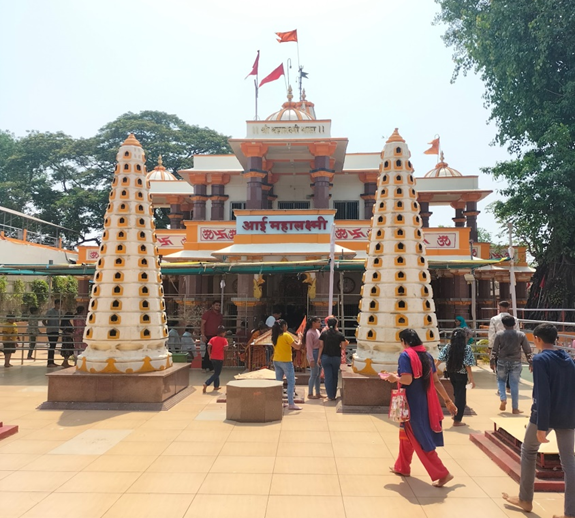
According to local lore, Mahalakshmi Mata journeyed from Kolhapur to Surat during the exile of the Pandavas. While resting near Sonale village, she was approached by Bhima (second Pandava), who asked for her hand in marriage. She agreed on the condition that he build a dam across the Surya River by dawn. Bhima worked through the night, but before sunrise, Mahalakshmi transformed into a hen and crowed, tricking him into thinking he had failed. Notably, the partially completed structure, known as Bhima Bandh, remains visible in the area today. Following this episode, Mahalakshmi is said to have rested in a cave near Ranshet village, where people began to go.

In another story, a pregnant woman had a vision in which the Devi promised to appear at the foot of a nearby mountain. This event led to the eventual establishment of the mandir in Vivalvede.
A yearly yatra is held between Chaitra Poornima and Chaitra Amavasya (the full moon and new moon days of the Chaitra month, i.e., March to April). During this time, a ceremonial flag is hoisted at the Mandir, which was notably a tradition that the Raja Maharaj Mukne of the former Jawhar state started.
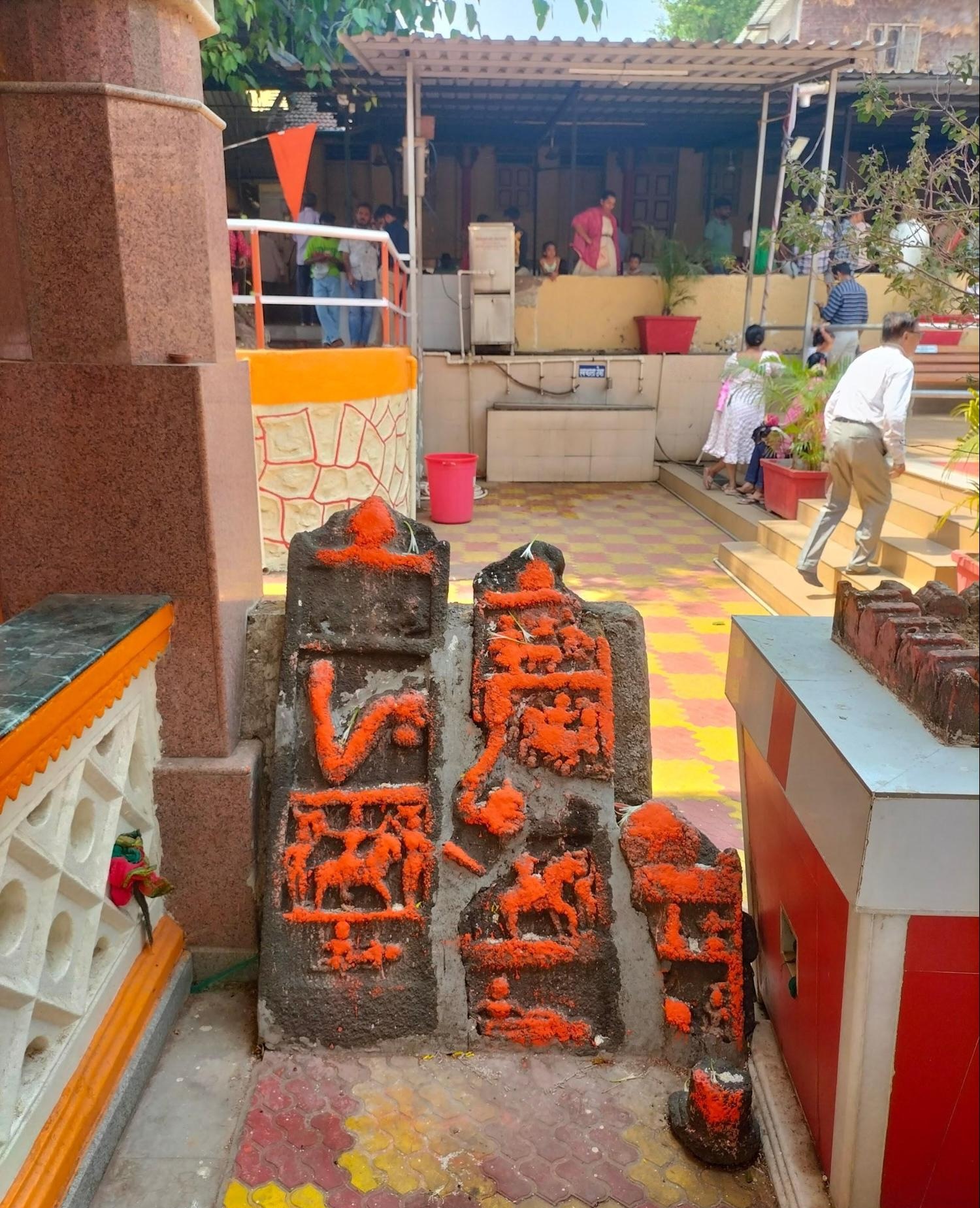

Manijeh Pirojsha Sachinwalla Dar-e-Meher Agiary
The Manijeh Pirojsha Sachinwalla Dar-e-Meher Agiary is a Zoroastrian Fire Temple located on Waliv Gaon Road in Vasai East. The Agyari was built by architect Bhumiraj Pirojsha Sachinwalla in memory of his mother, the Agiary holds great significance for the local Parsi community. The Agiary is a sacred space where Parsis gather for prayers dedicated to Ahura Mazda, who is regarded as the supreme deity in Zoroastrianism.
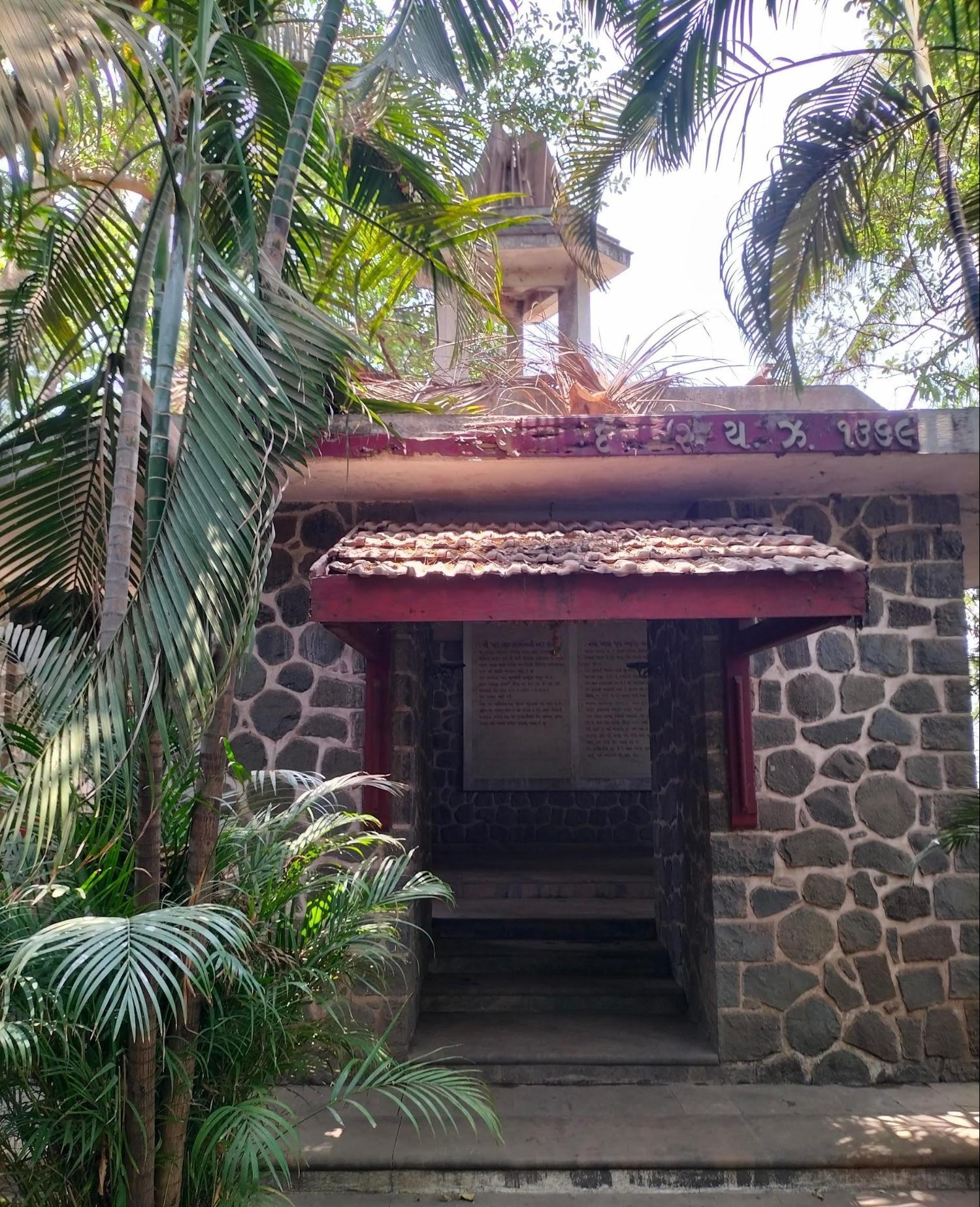

Inside the Agiary, a fire burns continuously, as it is an important part of the Parsi religious tradition. If it ever needs to be moved, it is carefully transferred to an oil lamp rather than being put out. It is worth mentioning that Parsi fire mandirs do not use electricity; the Agiary is illuminated solely by small lamps hanging from the ceiling. Due to religious customs, non-Parsis are not allowed inside, a restriction common across Zoroastrian fire mandirs worldwide.
Shitala Devi Mandir, Kelwa
Shitala Devi Mandir is located in Kelwa, a coastal town in Palghar district. The Mandir is dedicated to Shitala Mata, a Devi associated with healing, particularly in relation to disease and seasonal outbreaks. Legend has it that she appeared in a farmer’s dream, leading the locals to discover her Murti, which was ceremoniously brought to the township and installed at its current location. The original structure is believed to be centuries old, though it was extensively restored about 300 years ago under the patronage of Rani Ahilyabai Holkar.

Sopara
Sopara, now part of Nala Sopara in the Vasai-Virar region, was once one of the most important port towns as well as seat of Buddhism on the west coast of India. Known in historical records as Shurparaka (loosely translating into 'city of braves'), it served as the capital of North Konkan and was second only to Cambay (Khambhat) in its maritime influence. It was one of the administrative units under the Satavahanas and is mentioned in the inscriptions of Karle, Nashik, Naneghat and Kanheri.
![The remains of the Buddha stupa at Sopara, Palghar.[5]](/media/culture/images/maharashtra/palghar/cultural-sites/the-remains-of-the-buddha-stupa-at-sop_F6HWKim.png)
Sopara was a major centre of international trade, with links to Mesopotamia, Egypt, Arabia, Cochin, and East Africa. References in the Thane District Gazetteer (1882) suggest the town was a hub for valuable goods such as gold, tin, sandalwood, cotton, pepper, cassia, ivory, and peacocks. Some traditions connect it to the Phoenicians, who are believed to have referred to the region as Ophir or Sophara.
Sopara also holds a significant place in Buddhist traditions. It is associated with Purna Maitrayani Putra, a merchant-turned-disciple of the Buddha. According to these narratives, Purna played a key role in spreading Buddhism across the Konkan region. He is credited with building a shrine in Sopara, which was later visited by the Buddha and his disciples. The site is described as a flourishing capital with carved sandalwood friezes and monastery structures.
Notably, during the compilation of the Thane District Gazetteer (1882), Indian archaeologist Bhagvanlal Indraji conducted excavations near Sopara at the Burud Rajache Kot mound in Merdes village. He uncovered remains of a Buddhist stupa, along with relic caskets made of copper, silver, and crystal, and a begging bowl. Some of these objects are preserved at the Asiatic Society of Mumbai, offering important evidence of the site’s early Buddhist heritage.
![A statue of Gautam Buddha near the stupa site at Sopara, Palghar.[6]](/media/culture/images/maharashtra/palghar/cultural-sites/a-statue-of-gautam-buddha-near-the-stu_3NAjnrZ.png)
St. James Church
St. James Church is located in Agashi, along the road connecting Virar and Arnala in Palghar district. The church was originally built in 1558, during the period of Portuguese rule (1534–1739), when Agashi served as a coastal settlement supporting shipbuilding and trade.
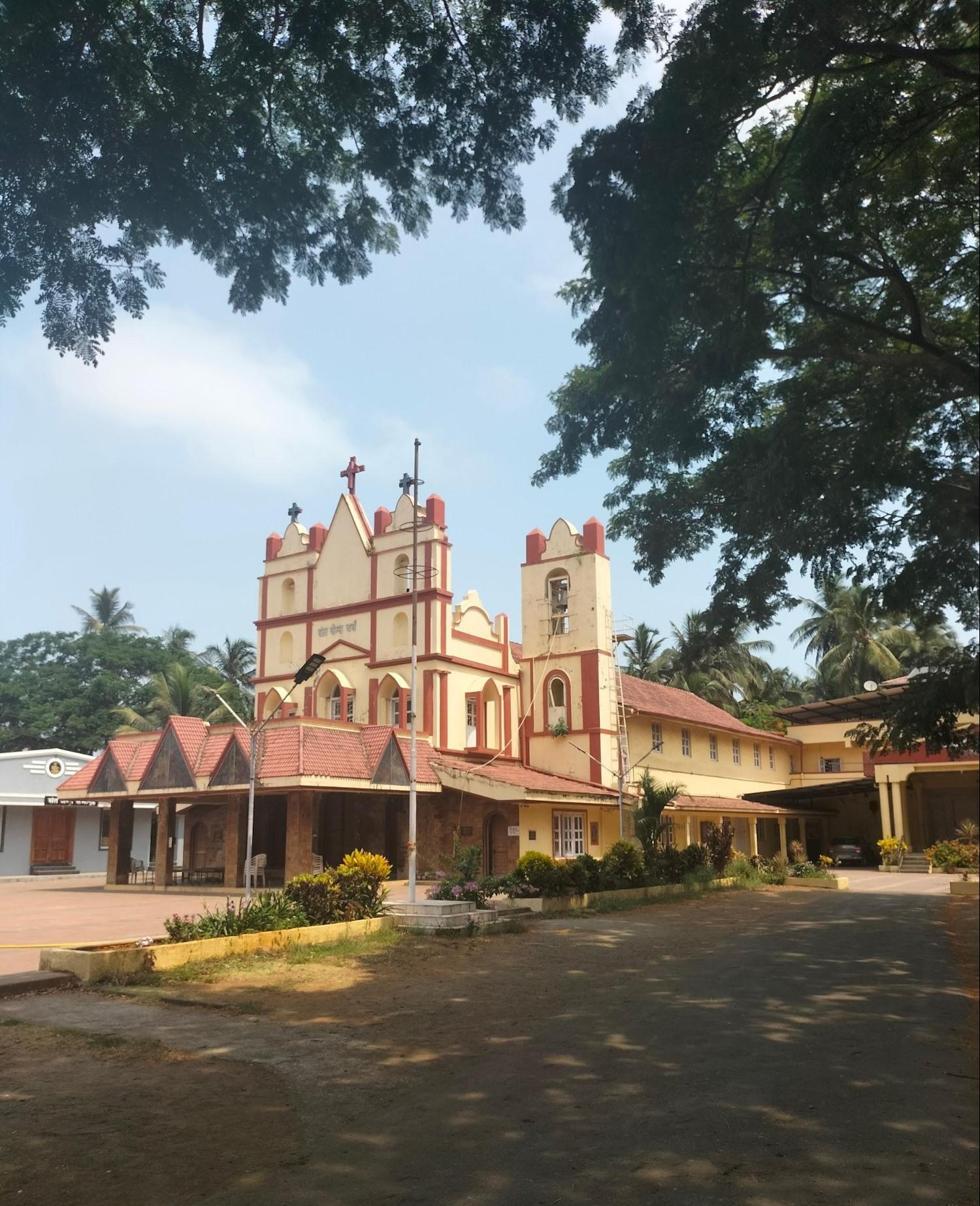
It is said that the Church withstood attacks over the centuries, and its structure was rebuilt by 1760. Renovations followed in 1900, led by Fr. Jovito V Dias, with the help of parishioners. The present layout preserves its early form, with a carved altar depicting scenes from the life of Jesus Christ. In 1938, the parish established Holy Martyrs English Medium Primary School, followed by St. James Marathi School in 1968, and St. James High School in 1977.
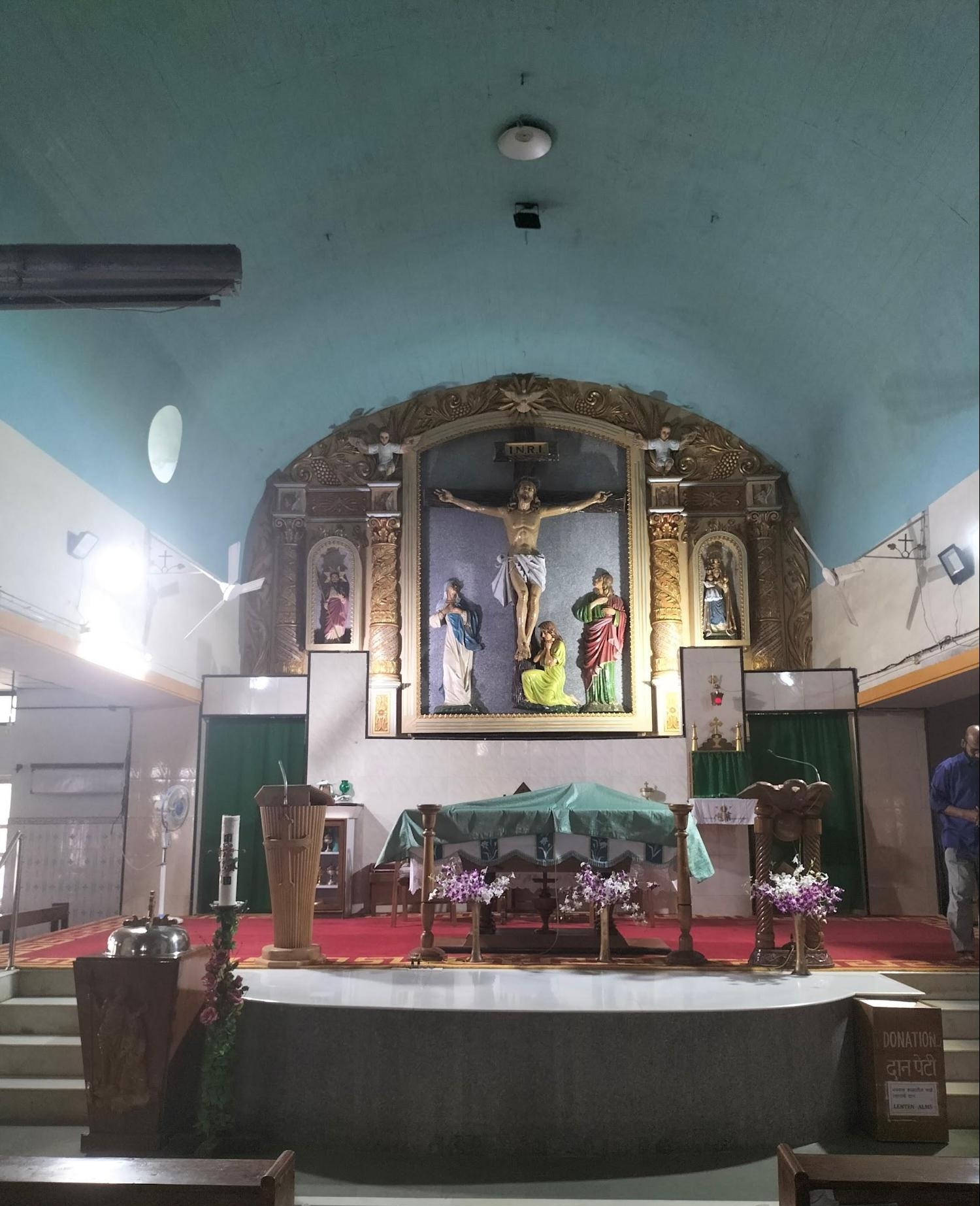
Today, St. James remains a centre for both worship and education, serving the wider community in and around Agashi.
Kali and Mahadev Mandir
Set along a steep hillside in Virar, the Kali and Mahadev Mandir complex includes mandirs dedicated to Kali and Mahadev. The path begins near a railway crossing and climbs through dense groves of banyan trees.

The Kali Mandir stands beside a banyan tree, where threads, clothes and offerings are tied to the trunk. Nearby, the Mahadev Mandir contains Mahadeva chi Pindi, along with small murtis of Bhagwaan Ganesh and Devi Parvati.
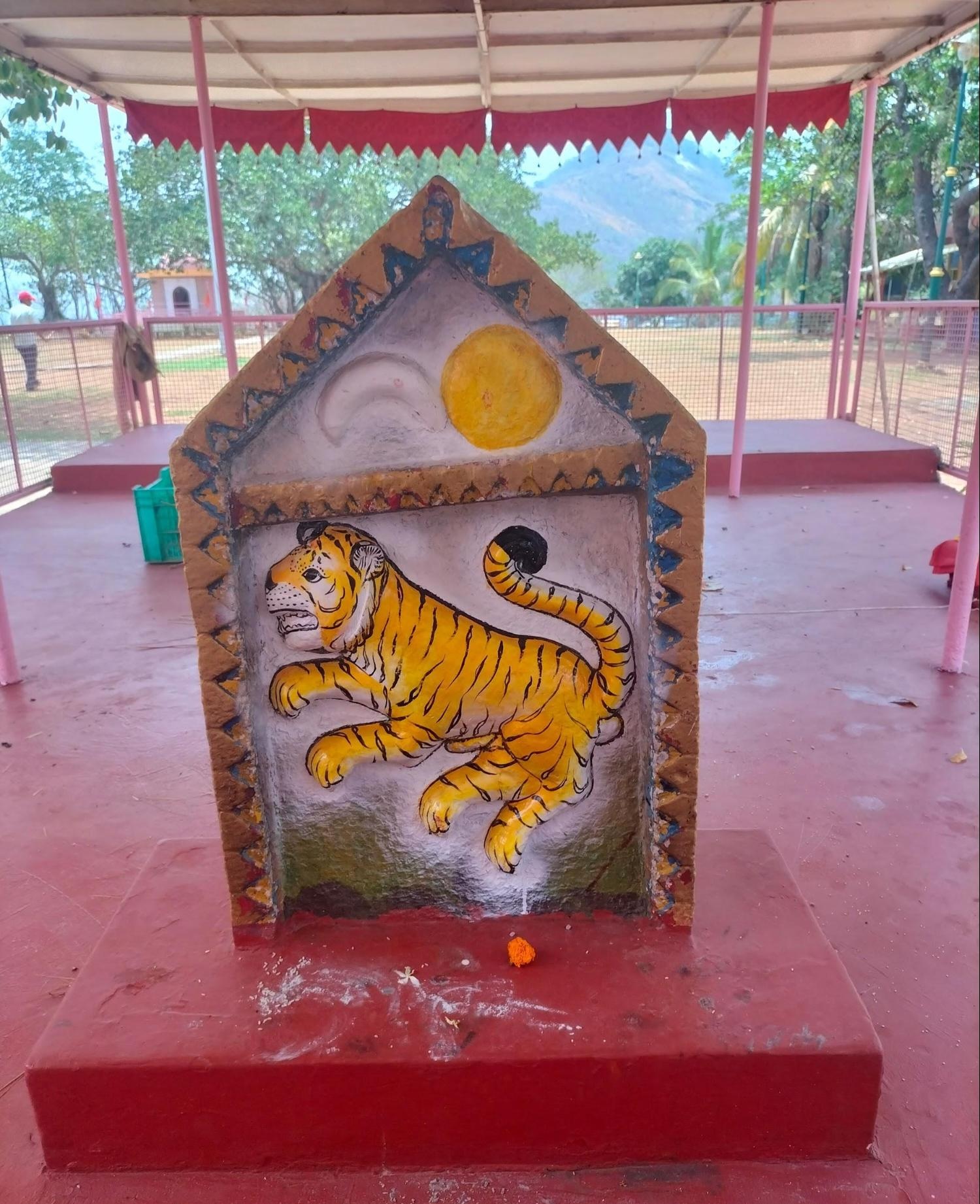
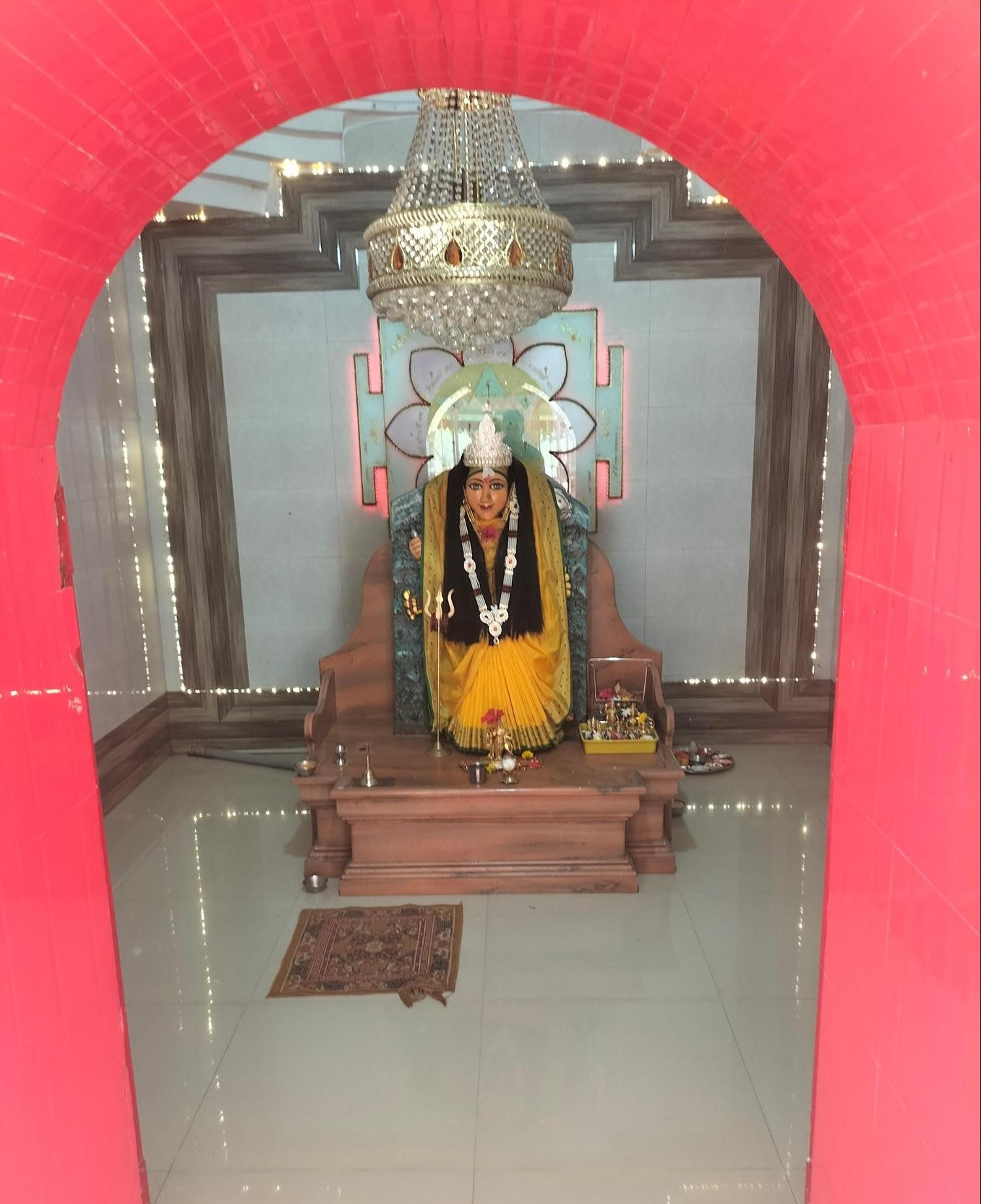
Although the complex was formally established in 2004, the site bears older signs of ritual use, including a Mahadeva Pindi and banyan groves. Entry is free, and the mandirs are maintained by locals from nearby settlements.
Vasai Fort
Vasai Fort, also known as Fort Bassein or Bacaim Fort, is located in Vasai, Palghar district. Originally constructed in 1533 by Malik Tughan, commander of Bahadur Shah, Sultan of Gujarat, it was surrendered to the Portuguese in 1534. It served as the administrative hub for the northern province.
Today it is in a dilapidated state, although restoration efforts by the Archaeological Survey of India (ASI) remain under scrutiny. It once housed a thriving town with ten bastions, including Cavalheiro, Nossa Senhora dos Remédios, São Gonçalo, São João, and São Sebastião, also known as ‘Porta Pia’. During the Portuguese era, Vasai, hailed as the ‘Court of the North’, was a prosperous center of commerce and culture.
![Ruins of the Vasai Fort at Vasai in Palghar.[7]](/media/culture/images/maharashtra/palghar/cultural-sites/ruins-of-the-vasai-fort-at-vasai-in-pa_hxll3V1.png)
Under Portuguese rule for 150 years, the fort became a prominent hub for naval and ship-building activities. Within its fortified walls, the Portuguese built grand residences, churches, convents, and an orphanage, showcasing its dual purpose as a military base and perhaps as a symbol of colonial power. Facilities like water tanks and storehouses supported a vibrant community, with influences extending to regions like Pakistan and Oman. A secret tunnel constructed in 1554 beneath the Saint Sebastian Bastion spanned 530 ft. and included poisoned arrowheads to deter intruders.
The fort’s history took a turn in 1739 when Chimaji Appa, a military commander and statesman of the Maratha empire, captured it from the Portuguese. Following this victory, Chimaji Appa built a Hanuman Mandir featuring a mustached murti wearing a Peshwa turban.
The Treaty of Bassein was a pact signed on 31 December 1802 here, between the British East India Company and the Maratha Confederacy's leader, the Peshwa Baji Rao II. Its key outcome was a decisive step in the dissolution of the Maratha Empire, as it placed the Peshwa under British control and led to the Second Anglo-Maratha War. In 1817, the fort and town were ceded to the British.
![The Hanuman Mandir within the premises of Vasai Fort.[8]](/media/culture/images/maharashtra/palghar/cultural-sites/the-hanuman-mandir-within-the-premises_PCYs3zV.png)
Among the surviving structures in the fort are three churches: the Holy Name of Jesus Church, Saint Joseph’s Church, and the Franciscan Church of Saint Anthony. Currently, only one church remains active in Vasai village, where the annual feast of Saint Gonsalo Garcia is celebrated.
![The abbey of St. Anthony’s Church within the ruins of Vasai Fort.[9]](/media/culture/images/maharashtra/palghar/cultural-sites/the-abbey-of-st-anthonys-church-within_SQ6qLD2.png)
Zai-Bordi Parsi Anjuman Agyari
The Zai-Bordi Parsi Anjuman Agyari is a prominent Parsi Firer Temple, mre than 100 years old. It is entirely constructed of wood and is located in Dahanu in Palghar district. Surely it reflects the prominence of Parsi community in the region but in recent years, the agiary’s congregation has dwindled due to migration, but it remains a symbol of heritage, often included in heritage walks, local history tours, and cultural documentation about Palghar’s diverse communal legacy. Its tranquil location, not far from Bordi beach, is characterized by its peaceful surroundings, old Parsi homes, and orchards that reflect the community’s agricultural roots.
![Inside the Zai-Bordi Parsi Anjuman Agyari in Bordi, Palghar.[10]](/media/culture/images/maharashtra/palghar/cultural-sites/inside-the-zai-bordi-parsi-anjuman-agy_6Z7thdk.png)
Puratan Mandirs of Gunj Village, Wada Taluka
Gunj is a quiet village in Wada Taluka, surrounded by wooded hills and scattered caves. The village is home to a set of, as locals call it, puratan and pandavkalin (ancient, from the time of the Pandavas) mandirs and one stone well. Some say that the architectural features of the mandirs suggest that they were constructed during the Shilahara period (9th–13th century CE), though their exact dates remain unverified. Most of these structures are still in use, while a few now lie in partial ruin.
The mandirs include the Parshuram Mandir, located at the top of a steep hill; the Gunjeshwar Mahadev Mandir, newly reconstructed atop an older base; a Devi Mandir near the fields; and a small roadside Mandir known as the Pandavas Zilla, which can be easily missed even though it lies along the path. An old stone well, carved from local stone, sits in the middle of the crop fields and is now mostly dry and unused.

The Parshuram Mandir is the most visible of the four and is well-maintained and painted. During Ram Navmi, a palki procession begins from this hilltop Mandir and travels down to the village centre. The Gunjeshwar Mahadev Mandir shows a clear contrast between the ancient stone structure and the newer construction that stands above it.
Access to Gunj requires taking a state bus from Virar to Wada, alighting at Kudus, and continuing by tum-tum or shared rickshaw to the village. While remote, the site is open to all and remains quietly preserved by the community that continues to serve as a remnant of its past.

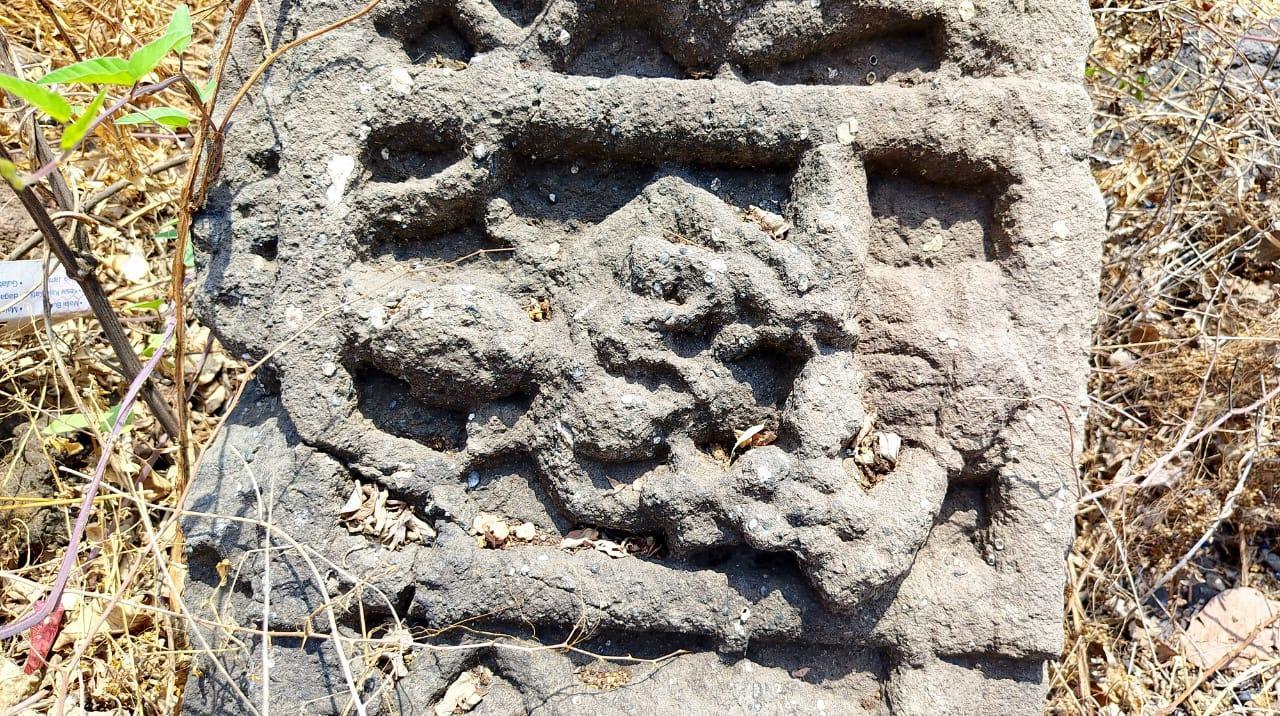
Sources
A Ghosh ed. 1956. Indian Archaeology 1955-56 – A Review.
Ashutosh Bijoor. 2013. Nalasopara – Buddhist Stupa & Chakreshwar Mahadev Temple – a cycling expedition.
Bombay. 1882. Government Central Press.https://books.google.com/books?id=uSM3AQAAMA…
Da Cunha, J. Gerson. 1993. Notes on the History and Antiquities of Chaul and Bassein. Asian Educational Services.
Jain Mandir. Shri Agashi Maha Tirth Jain Derasar, Chal Pet, Agashi, Virar West, District - Palghar (Maharashtra). Jain Mandir.https://www.jainmandir.org/Temple/Shri-Agash…
James M. Campbell. 1882. Government Central Press.https://archive.org/details/1882GazetteerOfB…
Kelwa Shitladevi. Kelwa Shitladevi Temple. Kelwa Shitladevi.https://www.kelwashitladevi.org/
Vasai Fort: From a prized asset to the ‘city of ruins. The Indian Express.https://indianexpress.com/profile/author/ben…
Vasai-Virar Welfare Council. 2016. St. James Church, Agashi. Facebook.https://www.facebook.com/photo.php?fbid=1864…
Wikipedia contributors. Holy Spirit Church Nandakhal. Wikipedia.https://en.wikipedia.org/wiki/Holy_Spirit_Ch…
Last updated on 22 July 2025. Help us improve the information on this page by clicking on suggest edits or writing to us.